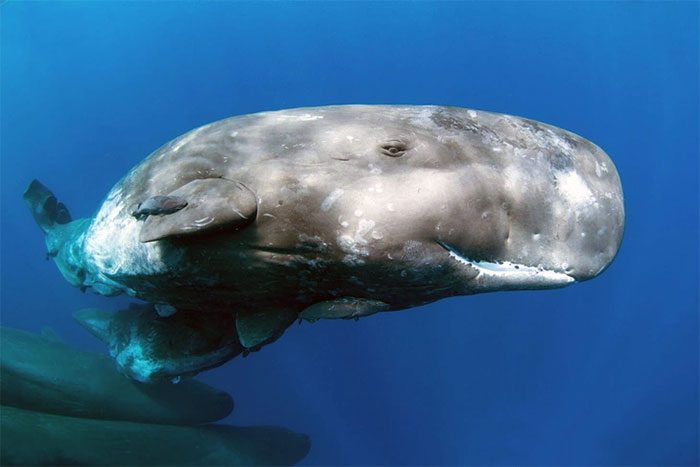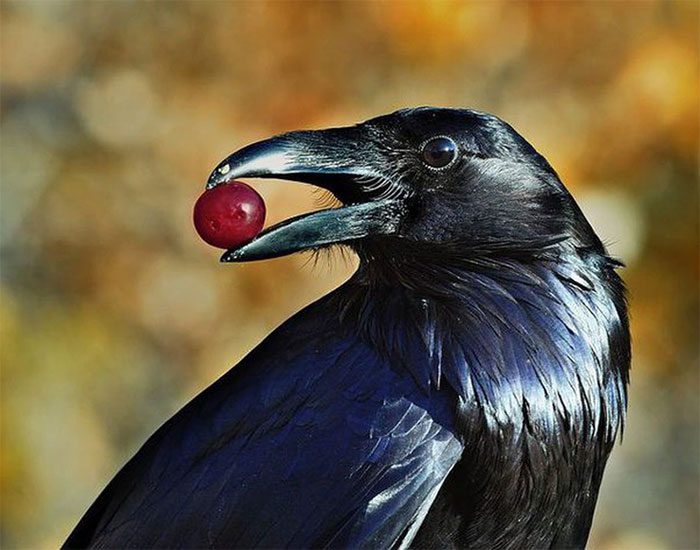Which Species Has the Largest Brain in the Animal Kingdom? And Is a Bigger Brain Related to Higher IQ?
In the animal kingdom, many species exhibit remarkable intelligence. From orcas with their terrifying hunting strategies to cats clever enough to solve cognitive puzzles, and even fish that can count… So, which species has the largest brain?
Species with the Largest Brain

The Sperm Whale (Physeter macrocephalus) has the largest brain, weighing up to about 9kg – (Photo: Shutterstock)
So far, no species has surpassed the Sperm Whale (Physeter macrocephalus), which boasts a brain weighing up to 9kg.
Moreover, they have been noted for their impressive intelligence. A study in 2021 found that after several hunting attempts, the success rate of hunters striking them decreased by nearly 60%.
It seems that sperm whales have learned how to avoid hunters, or they may be able to communicate this information to their peers, indicating that they possess greater communication skills and intelligence than previously thought.
However, when “ranking” brains, we should also consider the structure of the brain itself. The cerebellum is a structure responsible for movement, balance, coordination, and some memory functions.
In sperm whales, the cerebellum makes up about 7% of the total brain mass, while in orcas, this figure doubles to around 14%. In humans, the cerebellum comprises about 10% of the average brain mass, which weighs approximately 1.4kg.
The total body size of the animal also needs to be considered when assessing which has the largest brain. By this criterion, the “champion” is the Brachymyrmex ant: its brain accounts for 12% of its total body mass of 0.049 milligrams, according to a 2009 study.
This aligns with what is known as Haller’s Rule: the larger the animal in overall size, the smaller the brain-to-body ratio. “Since brain size is proportional to body size, the smallest animals tend to have the largest brain-to-body ratios,” said Wulfila Gronenberg, a professor of neuroscience at the University of Arizona, in an interview with Live Science.
Small Brains but High Intelligence

Corvids are as intelligent as great apes, despite having much smaller brains – (Photo: Pinterest)
A dataset of 1,400 mammal species (including some fossil species) compared their brain and body sizes and revealed some surprising results. For instance, the California sea lion, despite being famous for its spectacular tricks, has a relatively small brain compared to its body mass.
Conversely, humans and dolphins have smaller bodies but larger brains. In chimpanzees and orangutans, although they are comparable in size to humans, their brains are only about one-third the size.
Then there is the fascinating phenomenon of domestication syndrome, where domesticated species have smaller brains compared to their wild counterparts. For example, the bullfighting breed has a brain size nearly equal to that of the now-extinct wild aurochs (Bos primigenius). Cattle raised for meat and dairy, which have frequent contact with humans, tend to have the smallest brains.
For land animals, elephants have the largest brains and exhibit high levels of social intelligence, emotional depth, and memory.

Elephants have the largest brains on land and exhibit high social intelligence, emotional depth, and memory – (Photo: worldwildlife.org).
We should not forget birds, especially corvids, known for their intelligence. A study conducted by researchers at Lund University indicated that crows are as intelligent as chimpanzees, despite their differing brain sizes.
“Brain size isn’t everything. We found that corvids are as intelligent as great apes, even though they have much smaller brains,” said study author Can Kabadayi.


















































